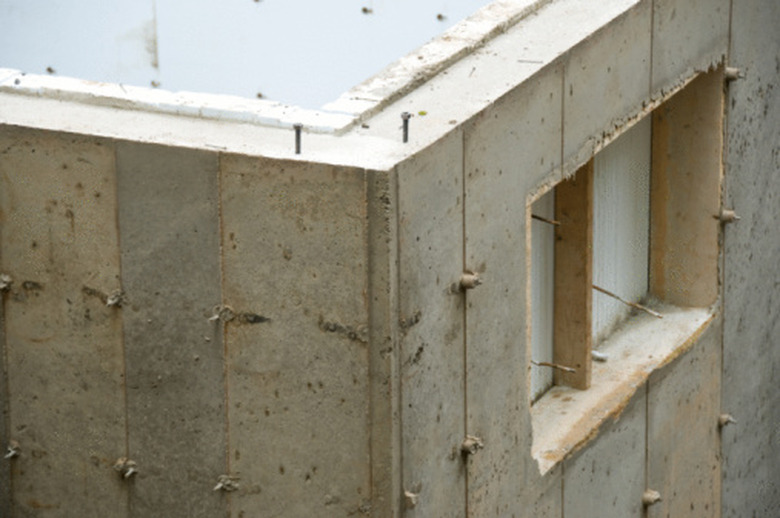Classification Of Rebar
ASTM International (formerly the American Society for Testing and Materials) is responsible for classifying different types of rebar in the U.S. Rebar is a steel rod that workers insert into concrete before the concrete cures or hardens. These rods reinforce concrete structures, like patios, floors, walls and foundations, and help unify curing concrete. Most distributors stock rebar in lengths of 20 and 60 feet.
Grade
The grade a section of rebar receives from ASTM International depends on its tensile strength, which refers to the amount of tension a material can endure or resist before fracturing. According to the University of Illinois, while high- or premium-grade rebar is more expensive than lower-grade rebar, the strength of high-grade rebar means that you can use less of it in a concrete construction project, lessening the labor intensiveness of the project. Some of the most common rebar grades include grade 40, which can resist tensions of 40,000 pounds per square inch (psi); grade 60, which can resist tensions of 60,000 psi; and grade 75, which can resist tensions of 75,000 psi. As Sizes.com notes, ASTM International also allows for the substitution of inch-pound rebar grades with metric rebar grades, which measure tensile strength using mega-pascals. Grade 40 is the equivalent of metric grade 280 — which, for example, has a tensile strength of 280 mega-pascals; grade 60 is the equivalent of metric grade 420 and grade 75 is the equivalent of metric grade 520.
- ASTM International (formerly the American Society for Testing and Materials) is responsible for classifying different types of rebar in the U.S. Rebar is a steel rod that workers insert into concrete before the concrete cures or hardens.
- As Sizes.com notes, ASTM International also allows for the substitution of inch-pound rebar grades with metric rebar grades, which measure tensile strength using mega-pascals.
Thickness
As with rebar grade, ASTM International provides English — or standard — as well as metric classifications for rebar thickness. While thin sections of rebar are more ideal for concrete structures with small dimensions like patios, thicker sections are more suitable for larger structures like the foundations of buildings. Under the standard classification system for rebar thickness, each rod receives a single-digit number. As Learning Construction notes, by dividing this number by 8, you can determine rebar thickness. For example, #3 rebar is 3/8-inch thick; #4 rebar is 1/2-inch thick; and #8 rebar is 1-inch thick. Metric thickness grades are typically two digits. To convert metric into English, you must first subtract 1 from the metric grade, and divide the result by 3. So rebar with a #25 metric thickness grade is the equivalent of rebar with a #8 English thickness grade.
- As with rebar grade, ASTM International provides English — or standard — as well as metric classifications for rebar thickness.
- As Learning Construction notes, by dividing this number by 8, you can determine rebar thickness.
Pattern
The majority of rebar sections are deformed, which means they have repeating patterns of ridges and depressions on their surfaces. These "deformities" help concrete grip — or adhere to — rebar. While the specific types of deformity patterns are not specified, as Sizes.com mentions, rebar manufacturers do include the number, height and spacing distances of the ridges. Plain rebar, which is free of deformities, is also available, but workers only use it in situations where the rebar sections need to slide. For example, workers use plain rebar in highway pavement to facilitate weather-induced expansion and reduce cracking.
